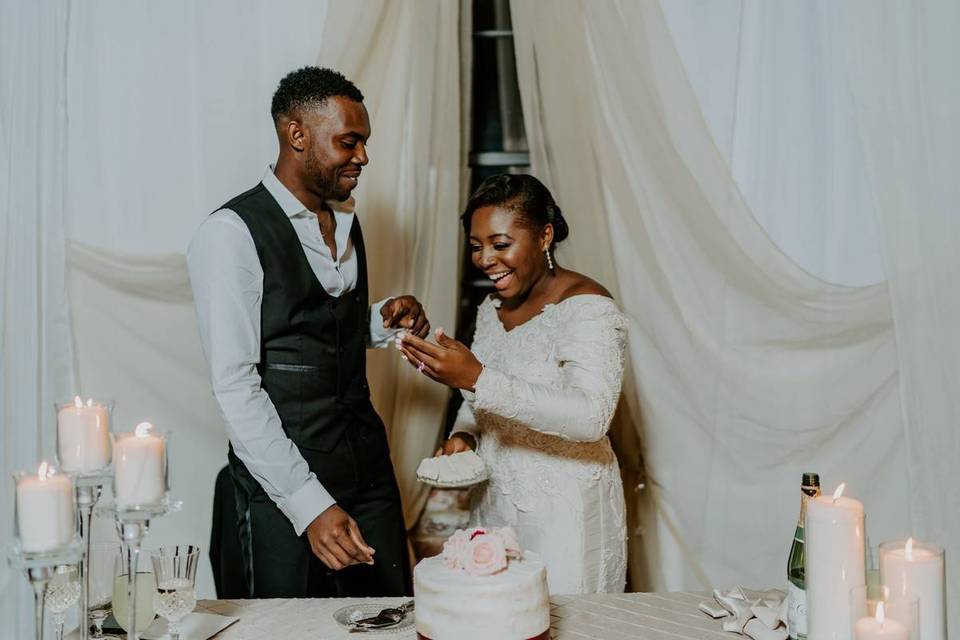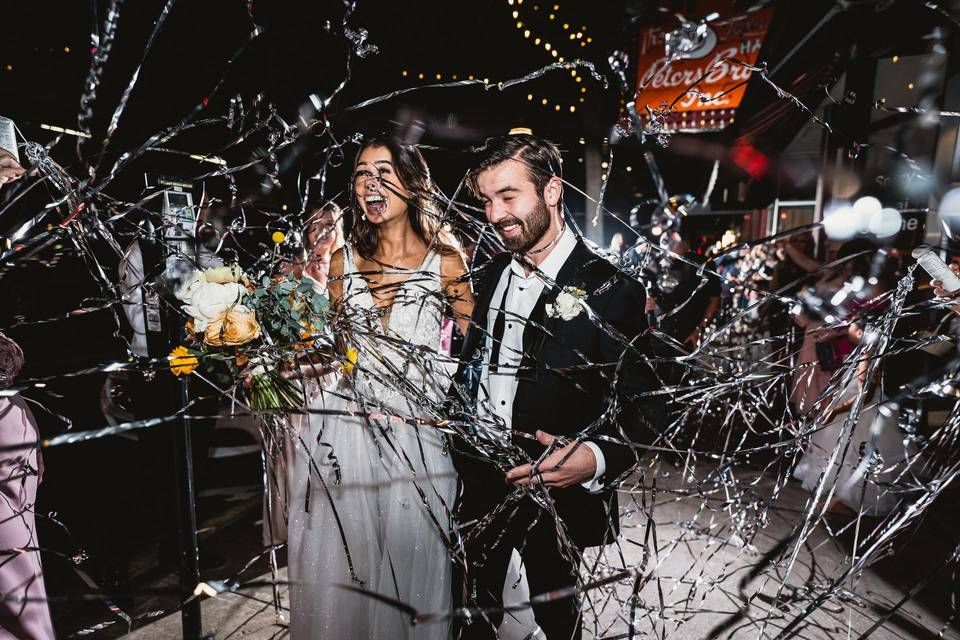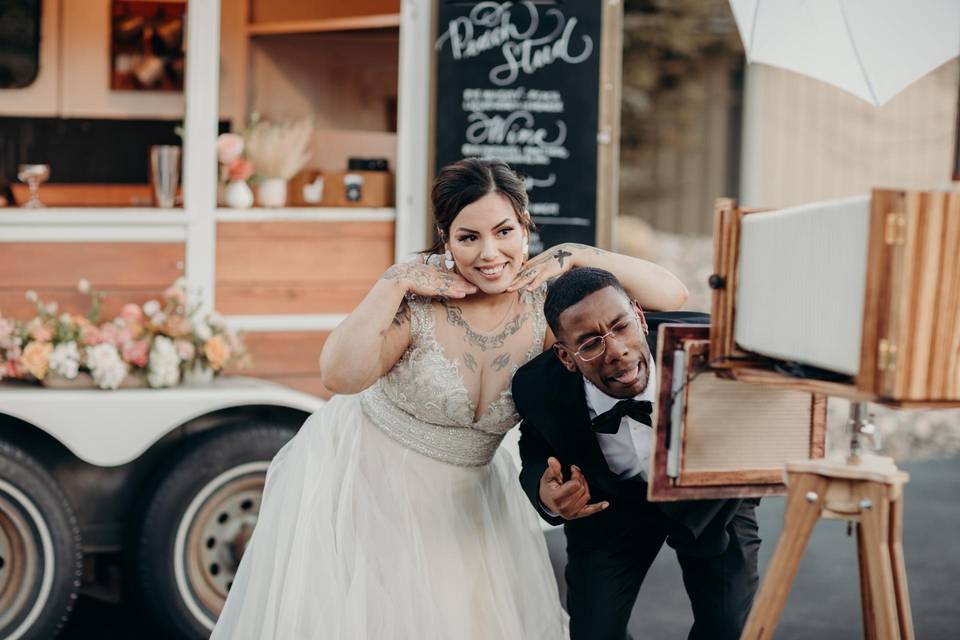12 Wedding Reception Traditions You Need to Know
A wedding reception is all about celebrating this special occasion with loved ones—but there are also certain traditions to include! Here's a list of the wedding reception traditions to consider including in the festivities.

You've said "I do" and now it's time to party! The wedding reception is an opportunity to celebrate your newlywed status with your friends and family members, and truly live it up. While the reception is all about letting loose and having fun after the wedding ceremony, there are certain wedding traditions that usually take place during the festivities. From special dances to cutting the cake, many of these traditions have been around for centuries and some even are meant to bring good fortune to the newly-married couple. However, though many of these wedding reception traditions are still popular today, they are entirely optional—if one or more of these don't feel appropriate to you and your partner, feel free to skip 'em. It's your big day after all!
Check out these wedding reception traditions and start planning your own celebration.
Grand Entrance
After the wedding guests have entered the reception and taken their seats, it's time for the grand entrance! Usually, the wedding party members including the best man, maid of honor, bridesmaids, groomsmen, bridesmen, groomsladies, flower girls, ring bearers, and others enter the reception space as the DJ or emcee announces their names and plays upbeat music. Finally, the newly-married couple make their entrance to great applause and take their places on the dance floor. The grand entrance is actually a newer tradition, a replacement to the more dated (and time consuming!) receiving line, where the wedding guests would line up and greet the newlyweds one by one. Nowadays, the married couple is introduced by the DJ or emcee and may later greet loved ones at their tables.
First Dance
Now it's time for the newlyweds' big moment in the spotlight—the first dance! For their first time dancing together as a married couple, the newlyweds cut a rug to a special song of their choice. The first dance may be a grand choreographed affair, or the couple may choose to just wing it. Either way, it's a sweet and romantic moment—and one of the most popular wedding traditions. According to a WeddingWire study 91% of couples perform a first dance during their reception.
Parent Dances
The couple will then perform a special dances with their parents. There may be a father-daughter dance, where the father of the bride dances with his daughter, and a mother-son dance, where the mother of the groom dances with her son. The mother of the bride and father of the groom (as new in-laws) may also dance together. The couple may also choose to dance with other family members, like grandparents, stepparents, and more.
Toasts and Speeches
During dinner, the couple's loved ones celebrate (and in some cases, roast) the newlyweds with toasts and speeches. Traditionally, the best man gives the first speech, followed by the maid of honor. The bride's family members, including the father of the bride, will then toast the couple. However, it's between the couples and their families to decide who gives speeches. The couple may also choose to give their own speech, thanking their guests for their love and support.
Cake Cutting
Who knew that a dessert could have such special meaning? The cutting of the wedding cake is among the most popular wedding reception traditions (83% of newlyweds have a cake cutting ceremony!), and it's actually quite symbolic. The traditional wedding cake has three tiers, and the couple usually cuts the bottom tier as an upbeat song is played. The couple puts their hands on top of each other and cut the cake together, which symbolizes their mutual support. The newlyweds then link arms and feed each other pieces of cake (or smash it in each others' faces!), an act that represents taking care of each other. It's even considered good luck for guests to eat the wedding cake, so don't be shy about digging in!
Bouquet Toss and Garter Toss
The bouquet and garter toss may be considered dated traditions by some, but it's still a common wedding tradition. During the bouquet toss, the bride tosses her bouquet to a group of single guests. Whoever catches the bouquet is said to be the next to marry. For the garter toss, the groom slyly removes the garter (often the bride's something old, something new, something borrowed, or something blue—another fun tradition) from under the bride's wedding dress and then tosses it to a group of waiting single men. Whoever catches the garter is supposed to give it to his future spouse. Sometimes, the person who caught the garter places it on the leg of the person who caught the bouquet, or the two dance together. Again, if you feel these wedding traditions are too gendered or just inappropriate, feel free to skip.
Anniversary Dance
Another fun dancing-related tradition (and alternative to the bouquet toss) is the anniversary dance, also known as the bouquet dance. A slow, romantic song is played and all married couples are called to the dance floor. The DJ or emcee then asks couples who have been married six months to take their seats, followed by those who have been married a year, and so on. Finally, the couple married the longest is left dancing and may receive the wedding bouquet or a round of applause from the crowd.
Guest Book
A guest book—or creative alternative—is often on display near the entrance of the reception venue. Guests write their well wishes to the couple in the guest book and it serves as a lovely memento of their nuptials.
Clinking Glasses
Throughout the reception, the newlyweds are encouraged to kiss anytime a guest clinks their drinking glass or, in some cultures, ring bells. While some couples might find this a fun tradition, others might shy away from the overt PDA. Again, it's up to you!
Cultural Traditions
While many of the traditions listed above are common at American weddings, many couples include traditions from their families' countries of origin in their reception. These reception traditions may include wearing traditional wedding clothing, performing special dances, and/or eating certain foods. Here are a few wedding reception traditions from around the world:
- In certain cultures, the money dance is a popular wedding reception tradition. Guests may "pay" for dances with the couple or shower the couple in cash.
- At Jewish weddings, the newlyweds and their guests dance the hora, a popular circle dance where the couple is lifted up on chairs.
- The cake pull is a popular Southern wedding tradition, where charms with ribbons attached are placed inside the wedding cake. The bridal party and any other single guests gather around the cake and pull on the ribbons, revealing their charm. Each charm has a special meaning and serves as a fun memento of the day.
- In France, the croquembouche, or tower of cream puffs, is the dessert of choice.
- At Venezuelan weddings, the newlyweds traditionally sneak out of the reception before it's over.
- At South Asian weddings, the bride’s family steals the groom’s shoes, and demands money for their safe return.
- For many Latinx couples, La Hora Loca or "crazy hour" comes with surprise entertainment and merriment for the guests, usually occurring between the reception and the after-party.
- Small bags of five Jordan almonds are must-have favors at Italian and Greek weddings, symbolizing good luck for the married couple.
- Rather than sign a guest book at Dutch weddings, guests write their well wishes on slips of paper and attach them to a "wishing tree".
Send-Off
At the close of the wedding reception, the couple may exit to great fanfare. This may include guests lining a pathway and holding sparklers, throwing confetti, or waving ribbons as the newlyweds head off to start their new life together.
After the Reception: Carrying Over the Threshold
Traditionally, the groom carries the bride over the threshold of their home to protect her from evil spirits. This is a bit of a dated tradition (who needs protecting here?) but if you think it sounds fun, by all means, go for it.





